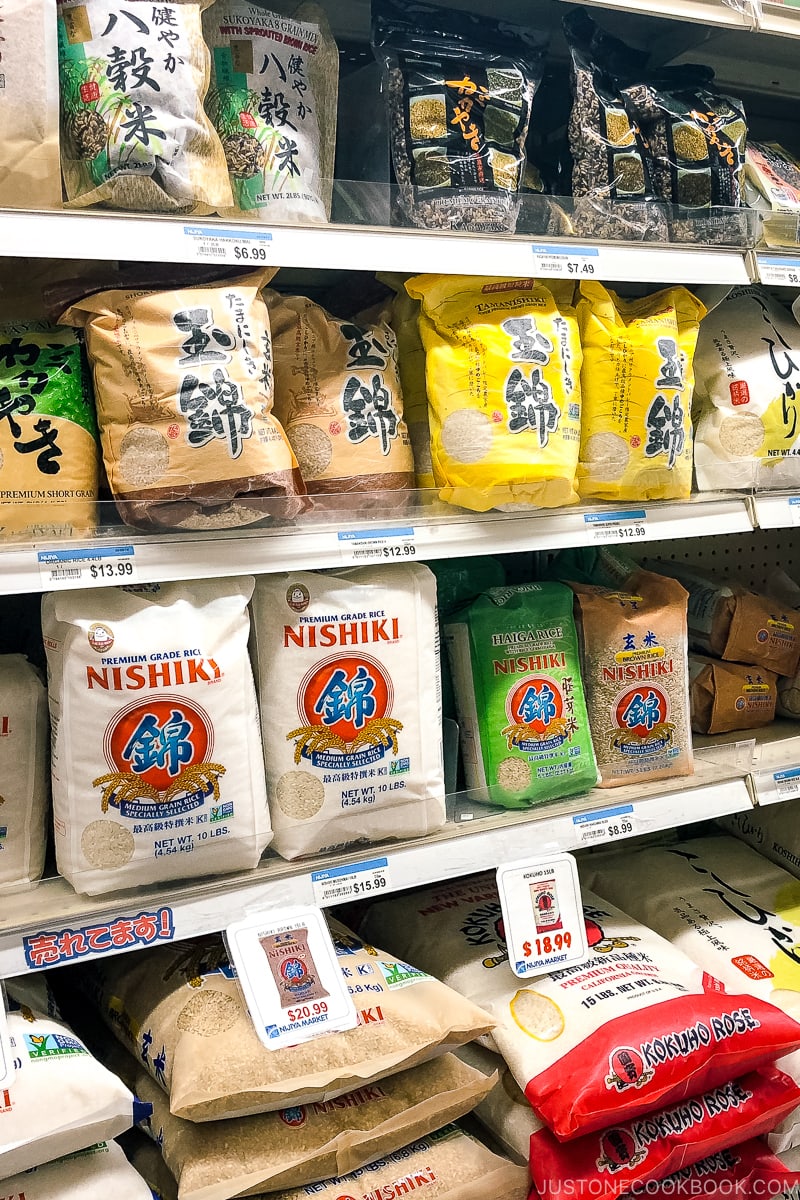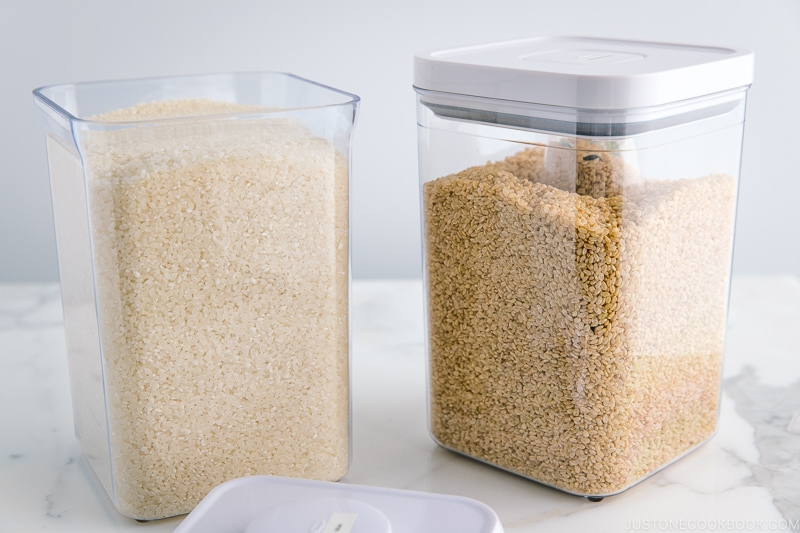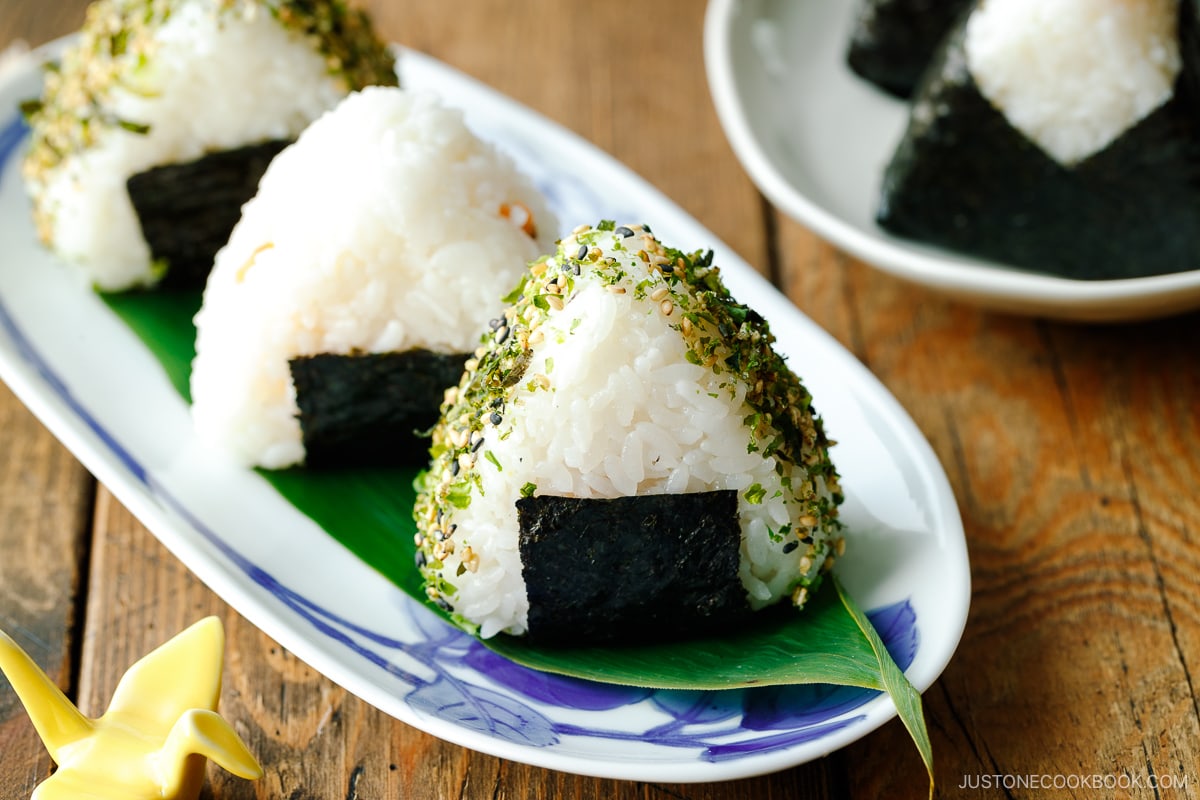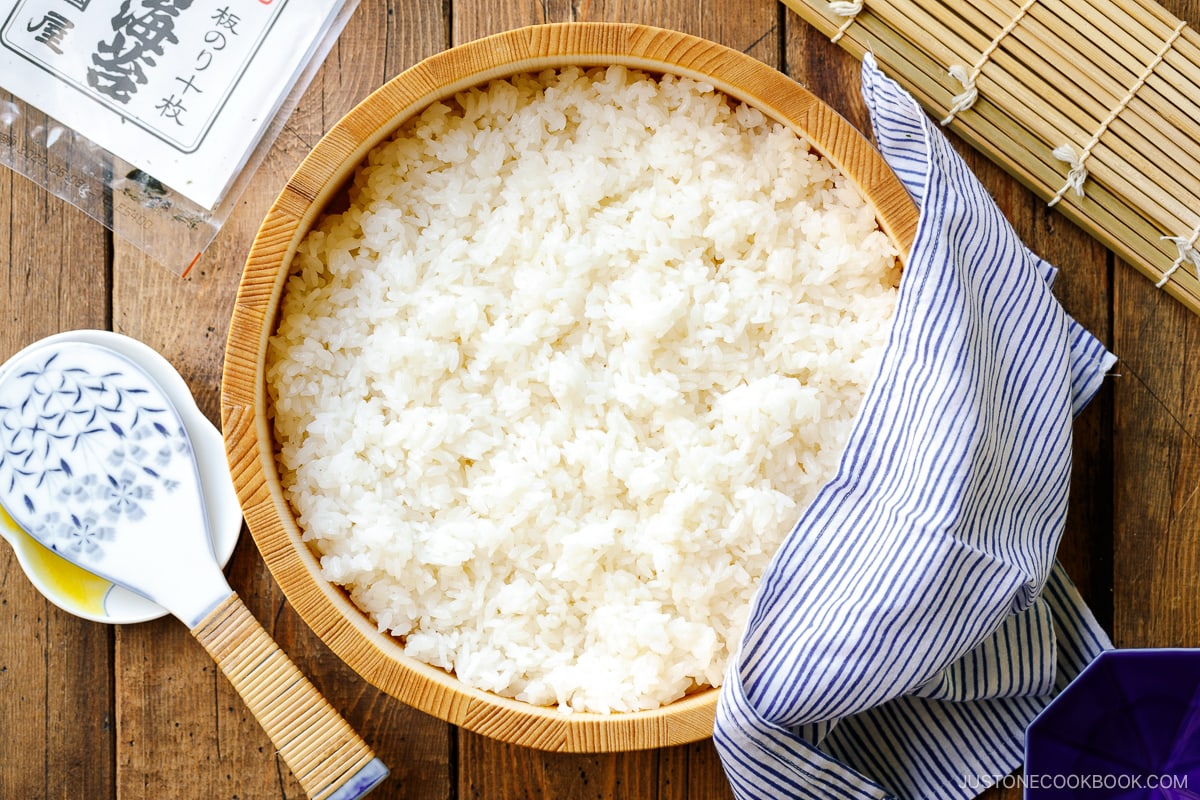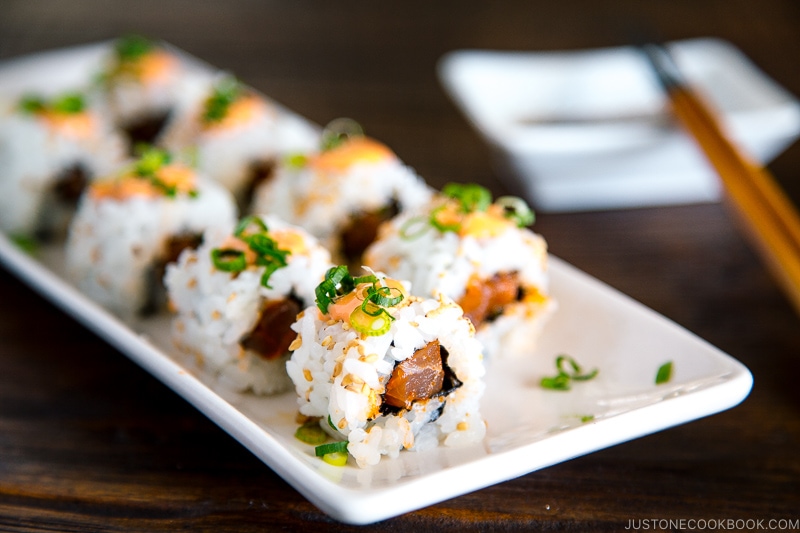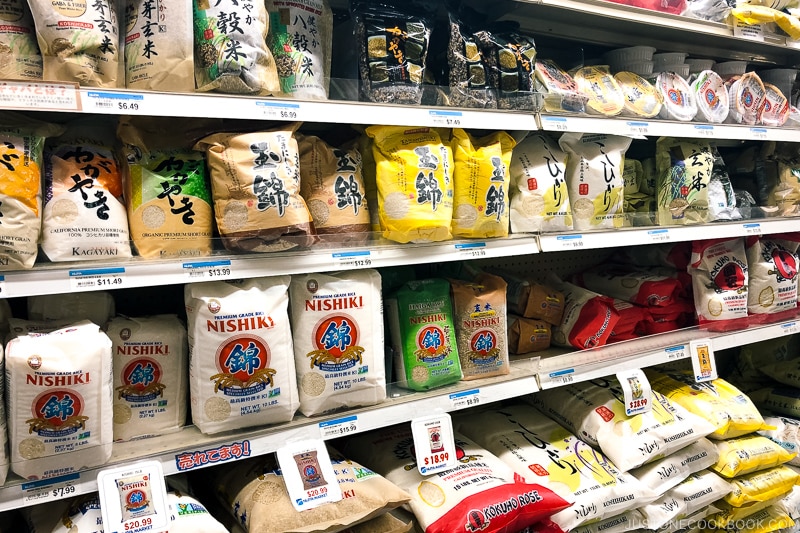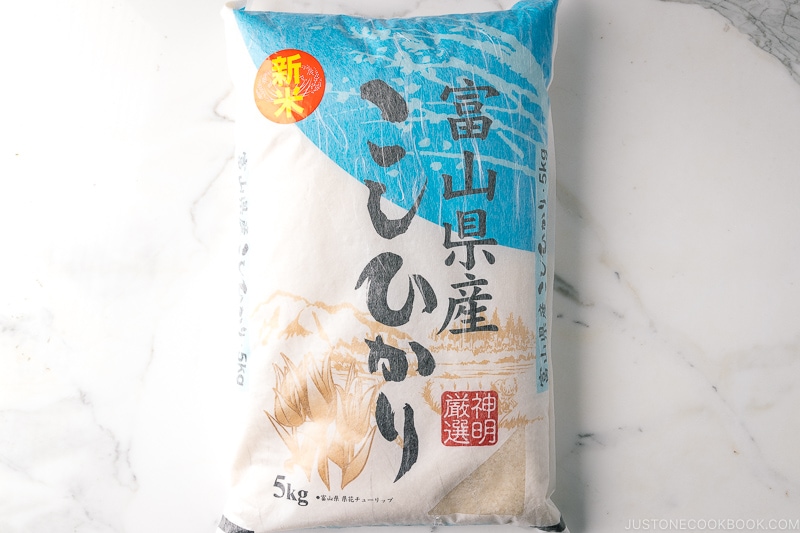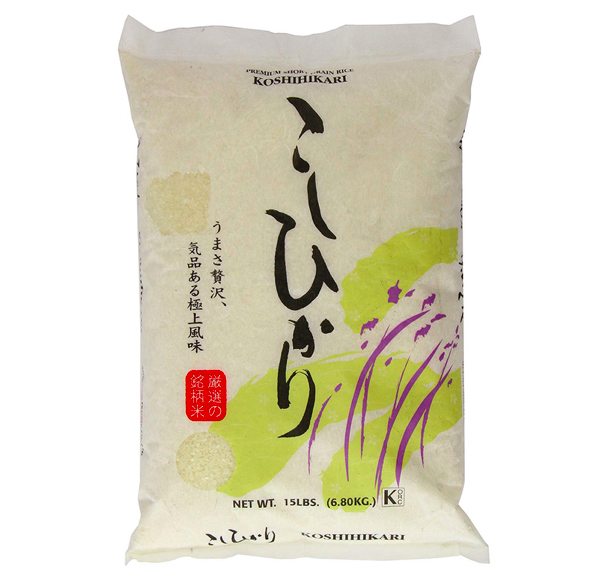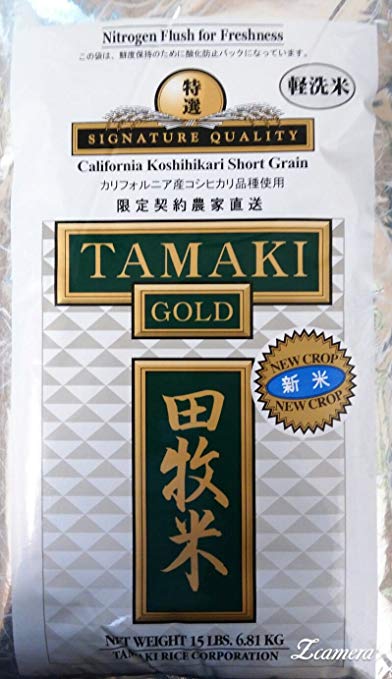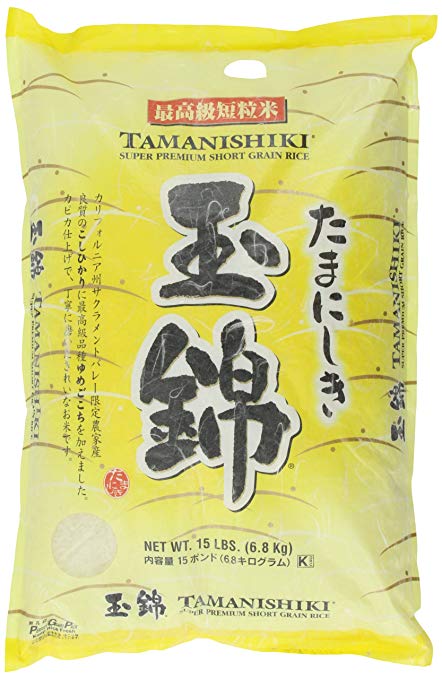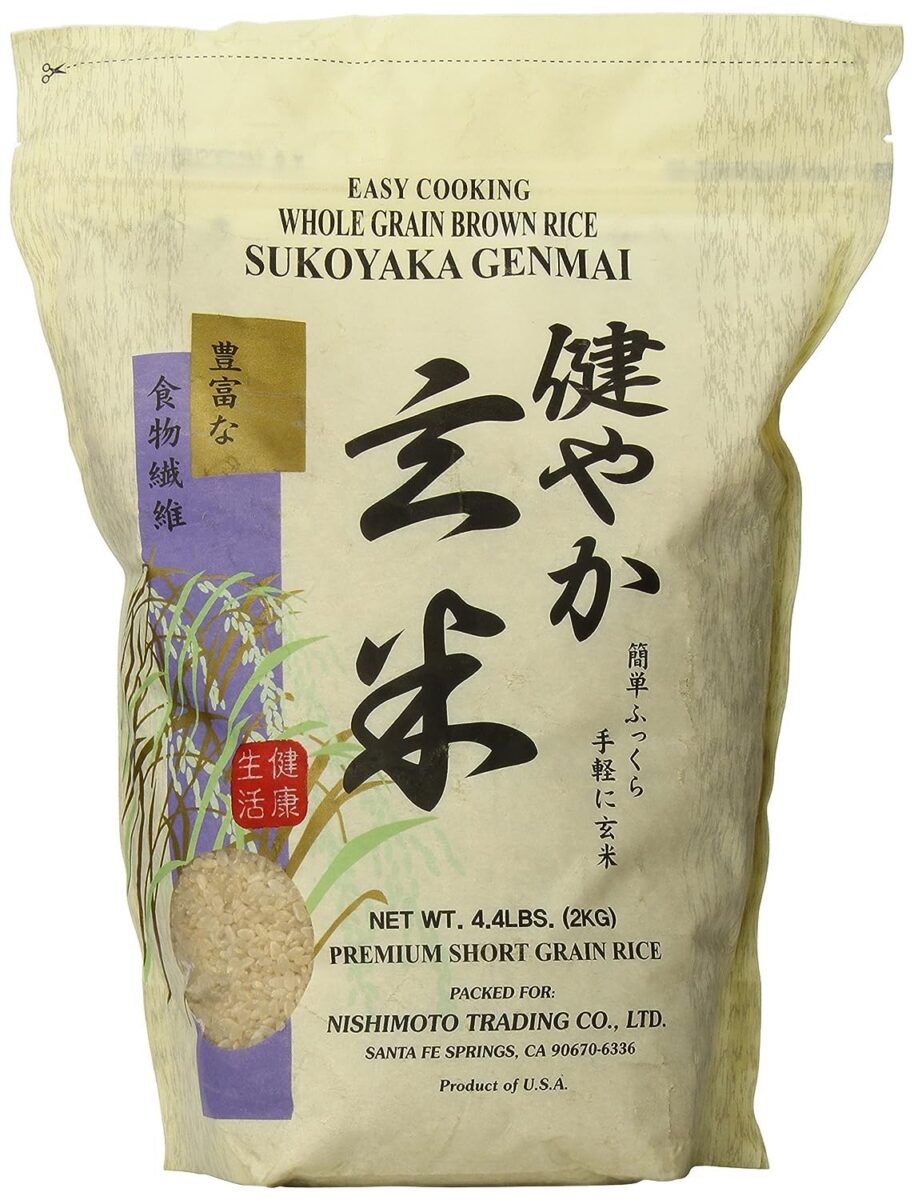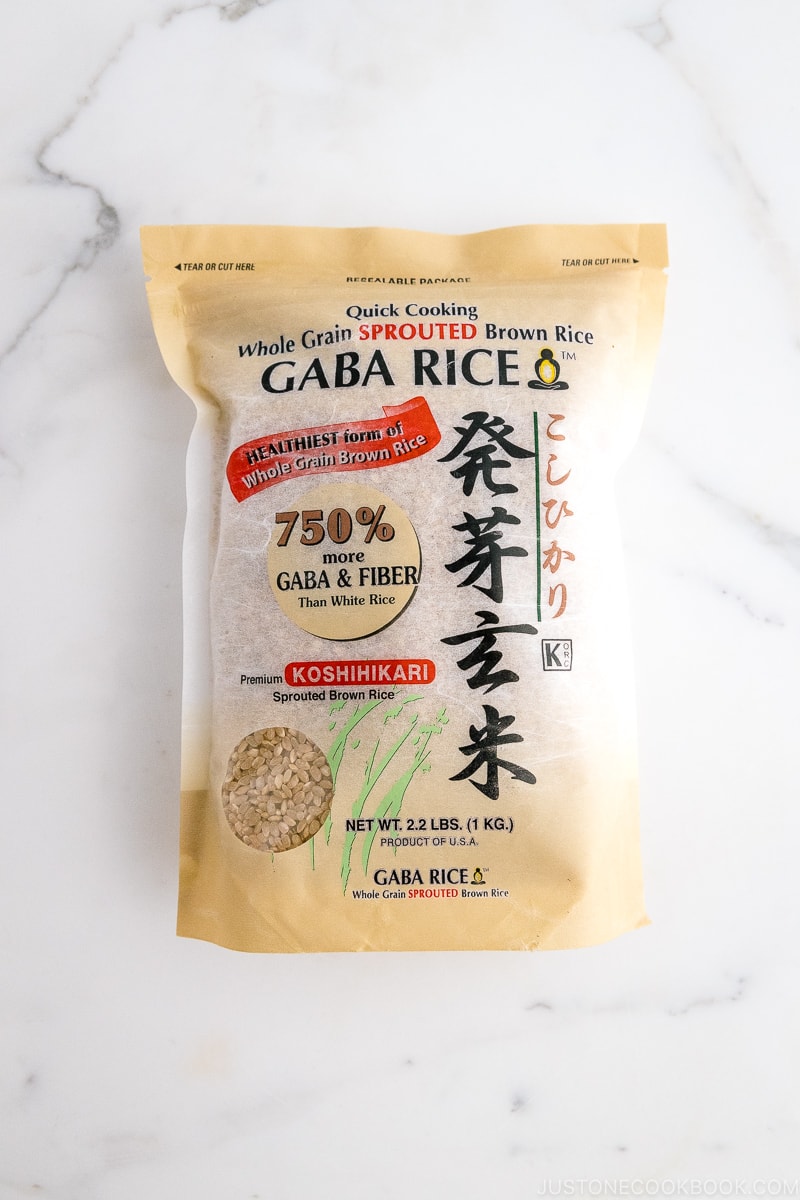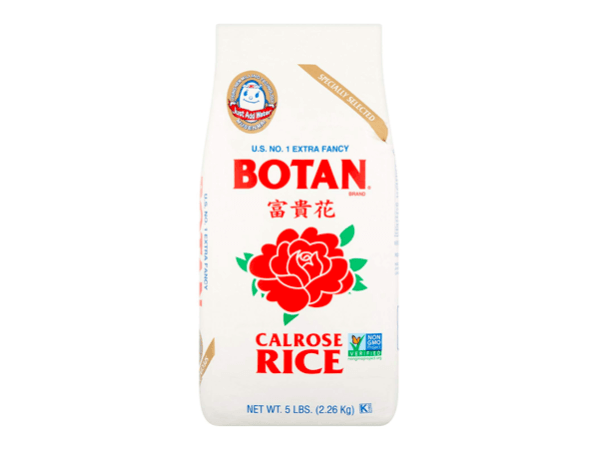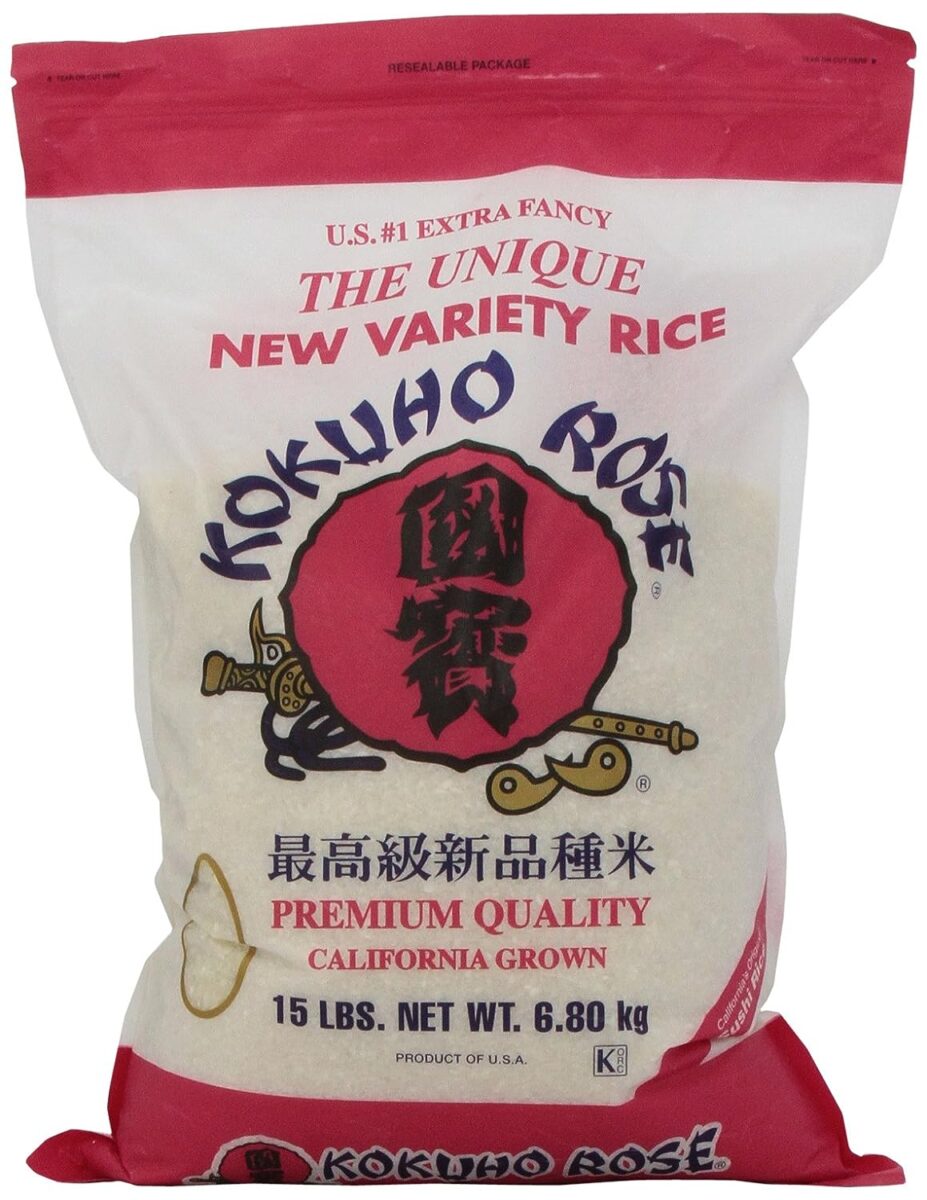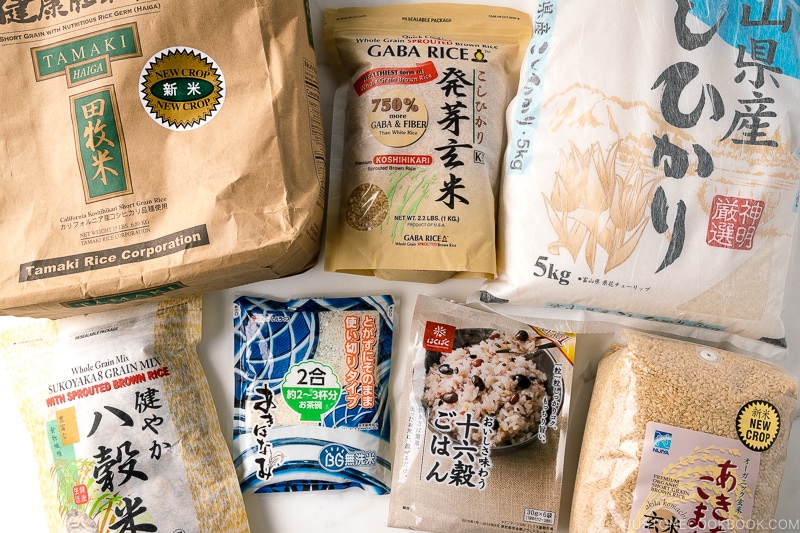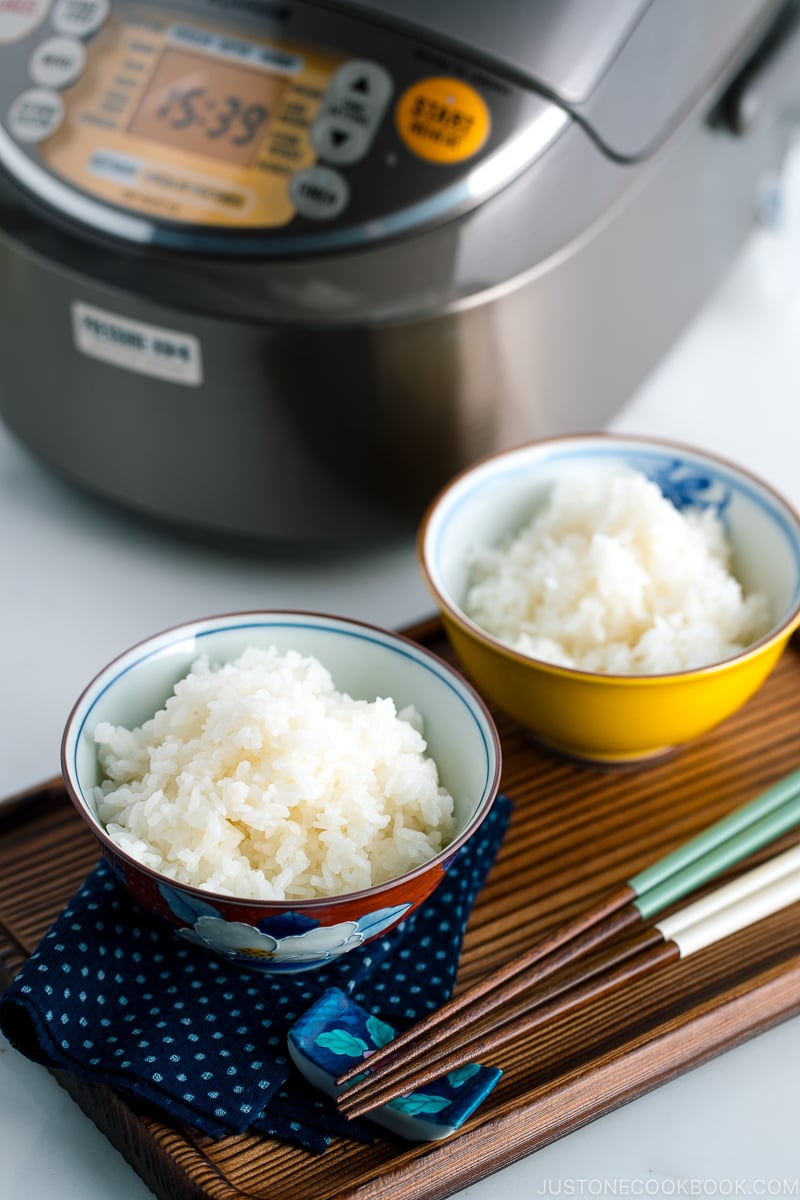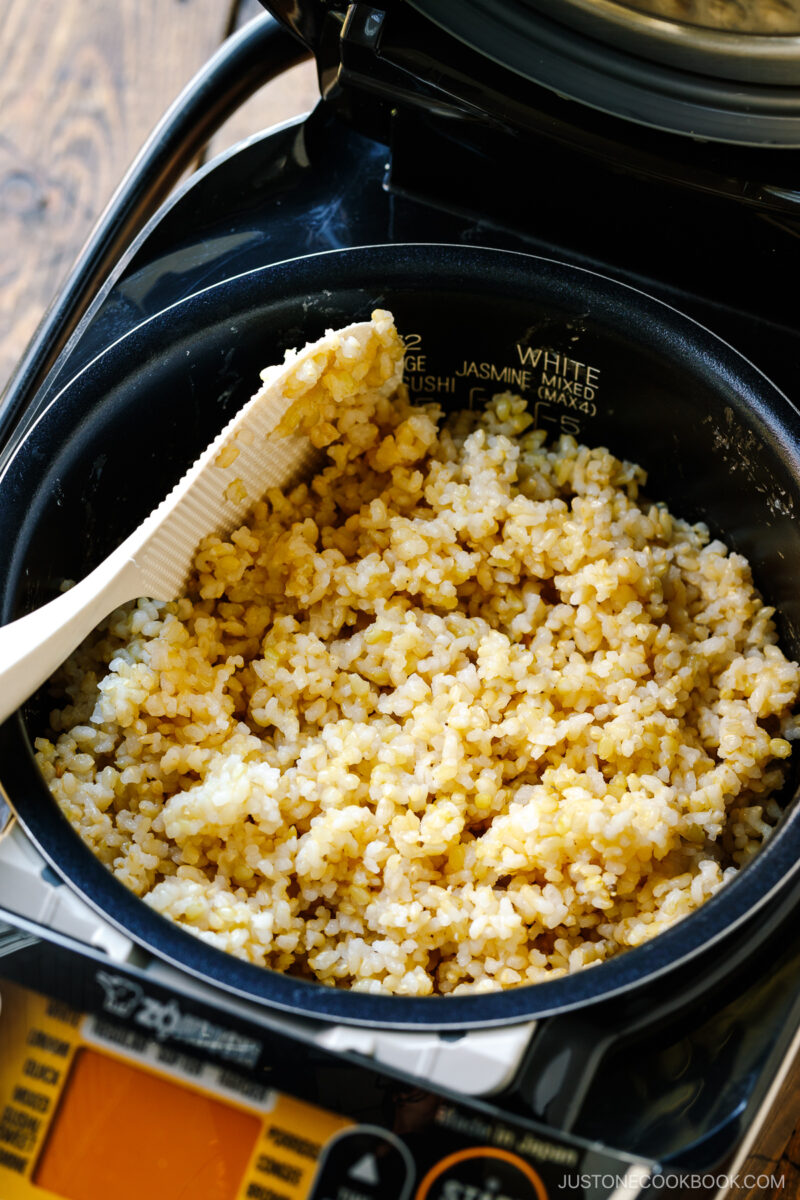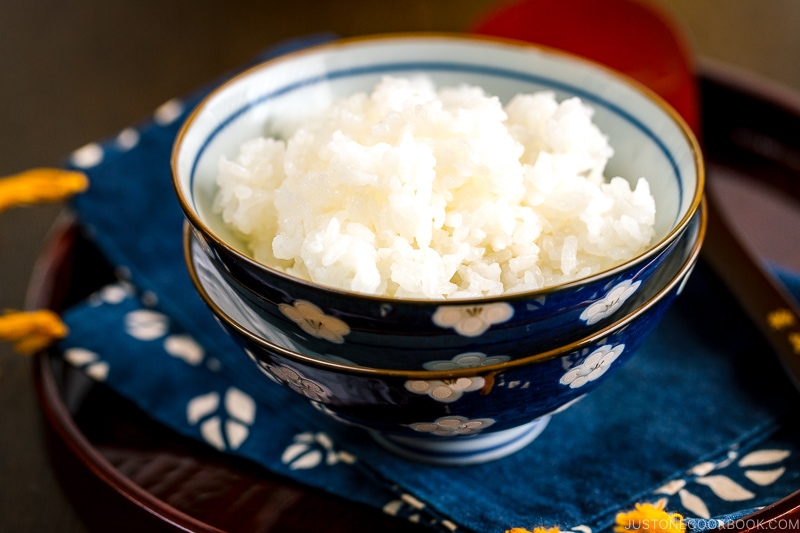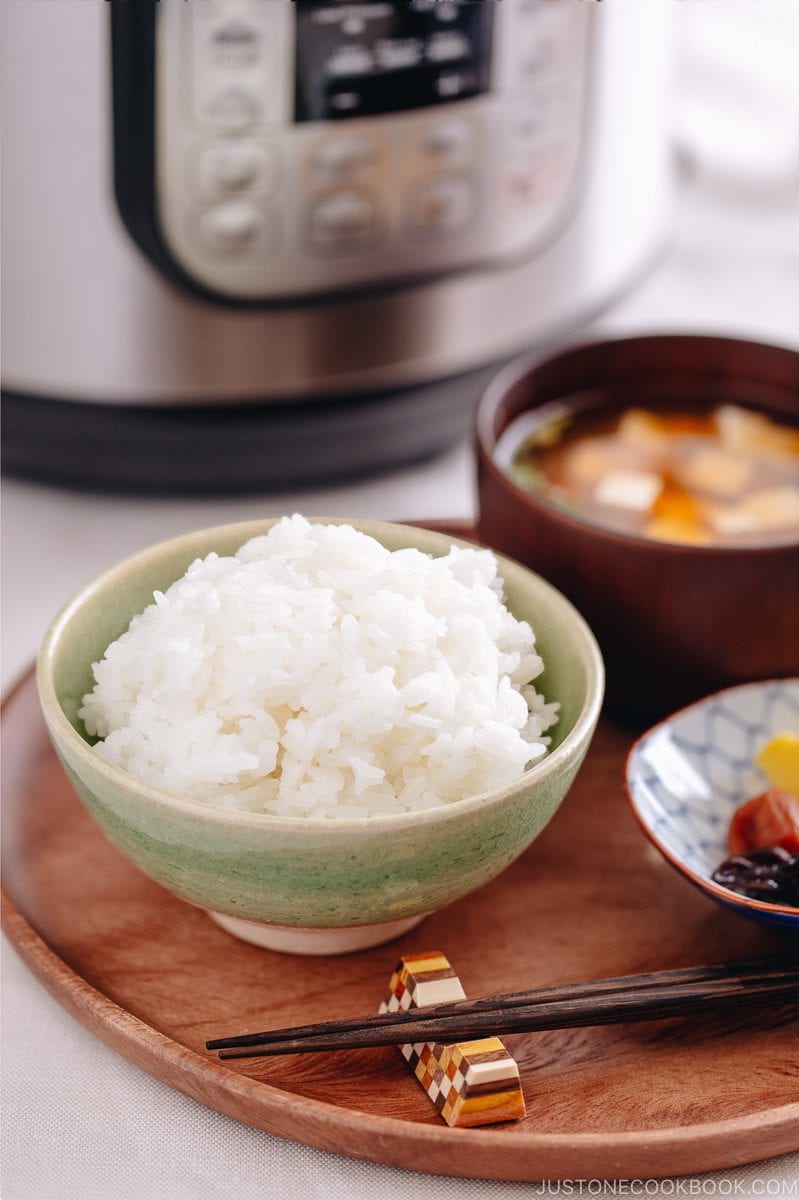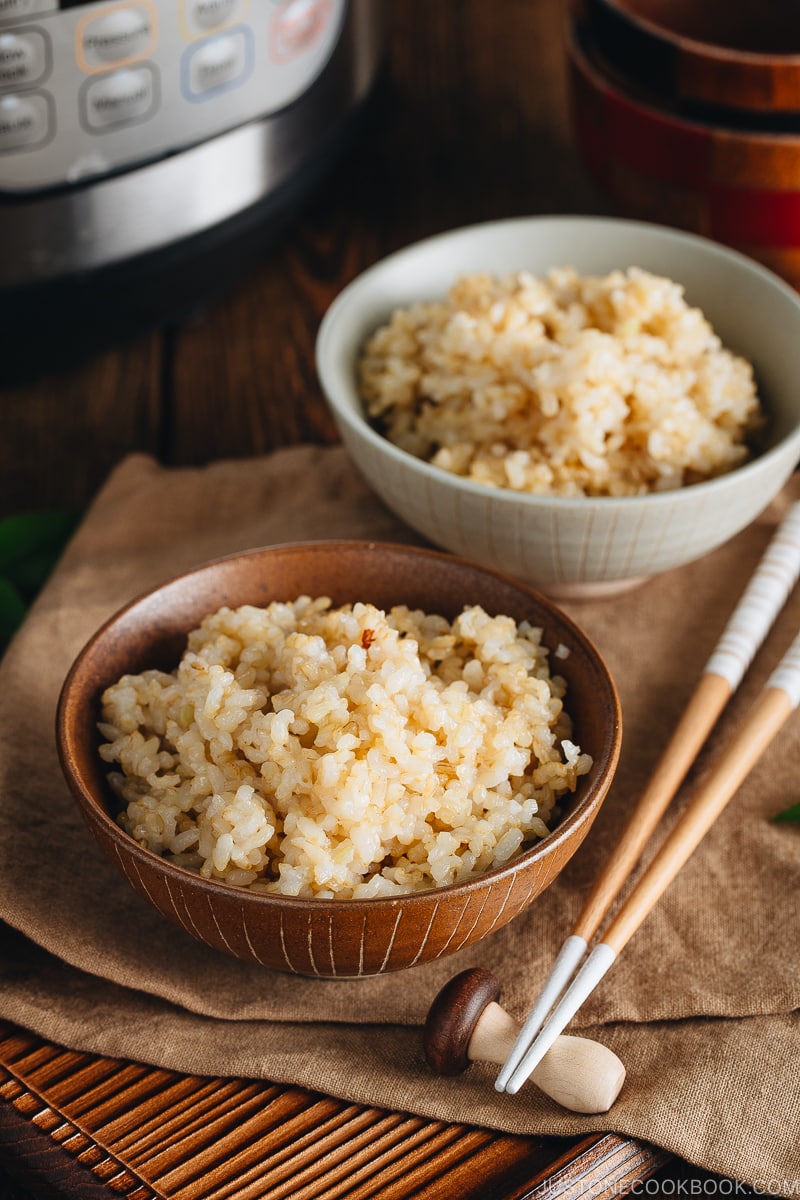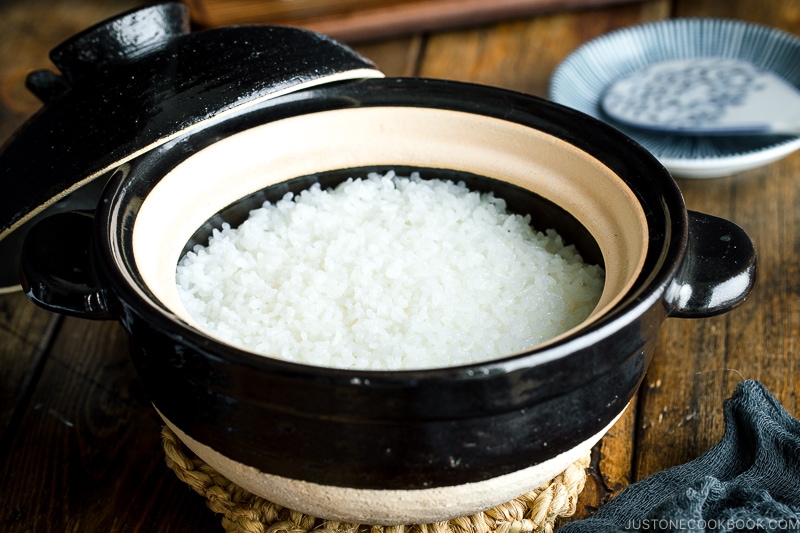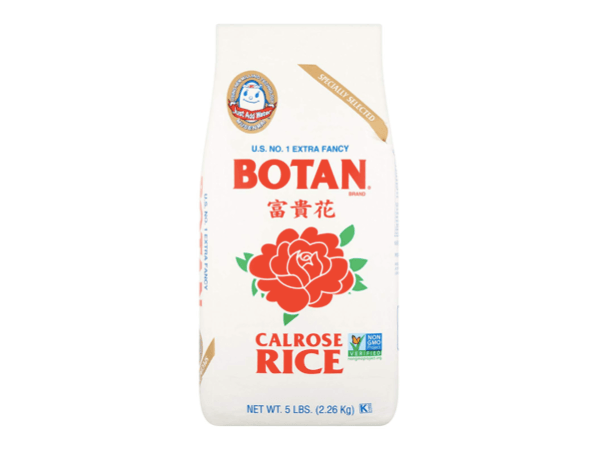The significance of rice in Japanese culture cannot be overstated. It is the daily staple, a source of cultural identity, a driving force of the Japanese economy, and the fundamental element of Japanese cuisine. Whether you want to venture into Japanese cooking or make sushi for a party, the first step is to learn the basics of rice. Before we delve deeper, let’s take a quick look at the overall varieties of rice.
Three Main Classifications of Rice
Generally, rice varieties can be classified into three groups—long, medium, and short-grain—based on their length-to-width ratio when cooked.
1. Long-Grain Rice
The grains of long-grain rice can be recognized immediately by their lengthy and cylindrical-shaped appearance. They are roughly 4-5 times as long as wide and are the most commonly used rice. When cooked, the rice stays fluffy yet firm, and the grains are separated and not sticky. Examples of long grains include Jasmine rice, Basmati rice, Mexican rice, traditional American long-grain white or brown rice, and European-grown style rice.
2. Medium-Grain Rice
Medium-grain rice is usually about 2-3 times longer than wide. When cooked, the grains are tender, moist, and slightly chewy and tend to stick together a bit. Examples of medium-grain rice include Bomba rice (used in Paella), Arborio rice, and most Asian-style rice, such as Chinese.
3. Short-Grain Rice
Short-grain rice is short, plump, and only slightly longer than wide. The rice grains cling together without being mushy when properly cooked. The grains have a higher starch content than regular rice. Combining medium-grain and short-grain rice into the same category is common, which can be confusing. Most Japanese rice is short-grain, although medium-grain Japonica rice can be grown in California.
What is Japanese Rice
For Japanese cuisine, you can find two types, and both are considered short-grain cultivars of Japonica rice. The first type is uruchimai (うるち米), Japanese short-grain or ordinary eating rice. It’s used for sushi, onigiri rice balls, and everyday Japanese dishes. It is also the type of rice being used to make sake and rice vinegar. The second one is mochigome (もち米), Japanese short-grain sweet or glutinous rice. It is commonly used to make mochi rice cakes or traditional wagashi sweets. Although Japanese short-grain rice and mochigome are characterized by their sticky texture, they are used differently and are not interchangeable. Mochigome is much stickier, chewier, and glutinous than regular Japanese short-grain rice. Due to its sticky texture, it has been referred to as ‘sticky rice’ in the U.S. and some Western countries. ‘Sticky rice’ does not have a definite meaning but is more of a convenient term or casual name to describe specific sticky rice. Thus, the usage gets muddled in different cultural contexts. In most Asian cultures, sticky rice typically refers to glutinous or sweet rice. So, while Japanese rice has a sticky quality compared to other types of rice, such as long-grain Jasmine or Basmati rice, it is not the same. 👉🏻 To learn more about Japanese glutinous or sweet rice, click here.
What Makes Japanese Rice Sticky?
Japanese rice is characteristically sticky because of its high proportion of starch and moisture content. Starch is itself composed of amylose and amylopectin. When the level of amylose is low and amylopectin is high, you get sticky rice. That’s the kind of rice grown in Japan. The unique stickiness makes good sushi and defines the character of Japanese cuisine.
What is Sushi Rice
Sushi rice is steamed Japanese rice flavored with sushi vinegar. It is only used for sushi. It is known as sumeshi (酢飯) or vinegared rice in Japan. Confusion occurs when “sushi rice” is used as a label for regular Japanese short-grain rice outside Japan. Some recipes sometimes refer to Japanese rice as “sushi rice.” Regular Japanese rice is commonly cooked plain for everyday meals, whether for Japanese curry, donburi rice bowls, or to make onigiri rice balls. 👉🏻 To learn how to cook the perfect sushi rice, click here.
Where to Buy
How To Choose The Best
There are many different brands out there. Regarding quality, Koshikikari is the preferred variety, and you can find various brands at Japanese grocery stores. Look for the label ‘新米‘ (shinmai) or ‘new crop‘ on the rice bags for the year’s fresh crop. This specialty is only enjoyed for a few months in the fall.
Short-Grain White Rice
My personal favorite is Koshihikari rice from Toyama, Japan. This bag is sold at Nijiya Market. Other good brands to consider:
Shirakiku Koshihikari Rice, which is a Koshihikari variety from California. Tamaki Gold (a California-grown Koshihikari) – premium rice brands Tamanishiki Super Premium Short Grain Rice (a hybrid of Koshikikari and Yuma Gokochi) – premium rice brands
Short-Grain Brown/Gaba Rice
Genmai Sukoyaka Brown Rice Koshihikari Premium Sprouted Brown Gaba Rice – You can also look for Akita Komachi brown rice at Nijiya Market
Readers Recommendation
Some people also highly recommend Lundberg Family Farms Organic Sushi Rice (Japanese short-grain rice). Try California-grown medium grain or hybrid varieties for more affordable and widely available choices. Botan Calrose, Nishiki, and Kokuho Rose are standard brands. They may not be the best, but they are usually cheaper in price.
The judging criteria for the best Japanese rice usually include freshness, sweetness, shininess, and pleasant fragrance. You can give a few of the rice brands above a try. Once you learn how to cook them properly, you can decide which rice you like most.
Varieties of Japanese Rice
There’s also a wide variety, such as white rice, brown rice, and the newer crops that include genmai/GABA rice, Haigamai, Buzukimai, etc. We have a separate post covering the varieties of Japanese rice. 👉🏻 To read more: Types of Japanese Rice
How to Store Rice
I recommend buying enough rice for your household to finish within a month. While buying a big bag and going through it for several months may seem cost-efficient, the rice can go bad if not stored properly. Store the rice in airtight containers such as Oxo airtight containers, and leave leftovers in the bag. Seal the bag tightly with tape to seal in moisture and freshness. Refill the container when it is empty. You can store the rice at room temperature or in the fridge.
Different Methods to Cook Perfect Rice
Now that you’ve learned the basics, it’s time to learn how to cook it properly. Pull out your shamoji (rice paddle), and don’t miss out on our helpful tutorial posts below:
Method 1: Rice Cooker
👉🏻 Learn how to cook perfect Japanese white rice with a rice cooker and perfect Japanese brown rice with a rice cooker.
Method 2: Pot on the Stove
👉🏻 Learn how to cook perfect Japanese rice in the pot on the stove.
Method 3: Instant Pot
👉🏻 Learn how to cook perfect Japanese white rice in an Instant Pot and perfect Japanese brown rice in an Instant Pot.
Method 4: Donabe
👉🏻 Learn how to cook perfect Japanese rice in a donabe.
How to Store Cooked Rice
👉🏻 To learn how to store cooked rice, click here. We pack leftover rice in the freezer!
What is Calrose Rice?
Calrose rice refers to the medium-grain rice that is grown in California. ‘Cal’ is a product of California, and ‘rose’ indicates medium-grain rice. Developed by Japanese-Americans in 1948, it has been used as reasonably convenient and inexpensive rice for many years in the US. It has a well-balanced flavor with moderate stickiness and is robust enough that most people and Japanese restaurants in the US use it for sushi and other Japanese dishes.
Is Korean rice a good substitute for Japanese rice?
You can say Japanese and Korean rice are pretty much the same. They are short-grain Japonica rice cultivars with the same natural sticky texture once cooked. The differences are where the rice is cultivated and how the Japanese and Koreans prepare it. In fact, the Japanese imported rice to Korea, replacing many native Korean rice varieties. You can read more about the history here. So, the short answer is yes, you can substitute Japanese rice with Korean rice. It all comes down to personal preferences over brands and the origin of cultivation.
Can I use Jasmine rice for sushi?
We do not recommend using jasmine rice for making sushi. It has a drier texture and different flavors, and the grains don’t stick together, so your sushi (or rice ball) will fall apart.
Should I Be Worry About Arsenic Found in Rice?
Arsenic is a natural compound found in the soil, especially where rice is grown. If you’re concerned about it, here are a few things you can do:
Choose white rice over brown rice – The rice bran holds most of its arsenic. The rice bran has been stripped away for white rice, so it has lower levels of arsenic. Choose reputable brands such as Shirakiku Rice, Tamaki Gold, and Lundberg. Lundberg Family Farms tests their rice and publishes the results on their website. Soak and rinse the rice thoroughly, and cook them well.
Another option is to follow the latest PBA method by the Institute for Sustainable Food. It involves parboiling the rice in pre-boiled water for five minutes before draining and refreshing it, then cooking it on a lower heat to absorb all the water.
How about the nutritional value?
Rice is naturally gluten, cholesterol, sodium, and sugar-free, making it an ideal source of carbs for energy. Brown rice generally contains more vitamins, minerals, and fiber. However, most rice manufacturers enrich white rice to replace the nutrients lost during processing. Choose the type of rice suitable for your health and digestive system. If a higher-fiber diet works better for you, go with brown rice or vice versa.
I have diabetes. Which type of Japanese rice is best for my diet?
Whole grain rice is always the better choice for diabetics, as it contains the lowest GI (glycaemic index). Once digested, it releases its energy slowly, stabilizing blood sugar levels, crucial in managing diabetes. But it’s essential to enjoy rice in moderation. For Japanese rice, you can choose Japanese brown rice, GABA rice, or Haiga rice. You can also mix your brown rice with healthy grains and seeds (adzuki beans, black soybeans, quinoa, millet, mung beans, and black rice).
Questions? Feedback?
Do you have any favorite Japanese rice brands that were not mentioned in the article? If you have more questions regarding Japanese or sushi rice, let us know in the comment section below. Editor’s Note: This post was originally published on November 18, 2018. It was updated with more information in March 2022.
